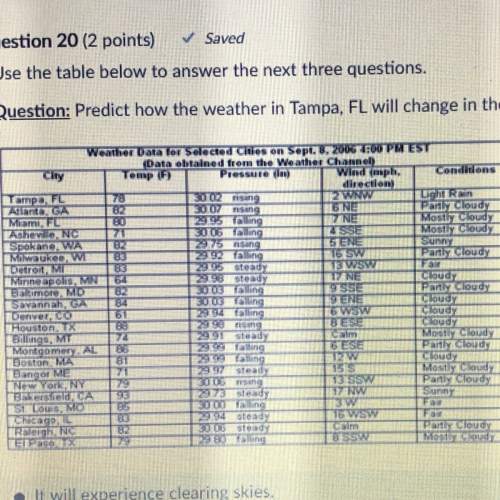
Physics, 26.03.2020 22:11 natetheman7740
Particles are scattered classically by a potential: V (r) = U(1 − r 2/a2 ), for r ≤ a 0, for r > a , U is a constant. Assume that U > 0. A particle of mass m is coming in from the left with initial velocity v0 and impact parameter b < a. Hint: work in coordinates (x, y) not (r, φ). 1. What are the equations of motion for determining the trajectory x(t) and y(t) when r < a? 2. Assume that at t = 0 the particle is at the boundary of the potential r = a. Solve your equations from the previous part to find the trajectory x(t) and y(t) for the time period when r < a. Express your answer in terms of sinh and cosh functions. 3. For initial energy 1 2mv2 0 = U, find the scattering angle θ as function of b.

Answers: 1


Another question on Physics

Physics, 21.06.2019 20:20
To create electromagnetic induction, which of the following has to move? a. a wire b. a magnet c. a transformer d. either a or b
Answers: 2

Physics, 22.06.2019 02:00
Chapter 23, problem 075 the figure shows a geiger counter, a device used to detect ionizing radiation (radiation that causes ionization of atoms). the counter consists of a thin, positively charged central wire surrounded by a concentric, circular, conducting cylindrical shell with an equal negative charge. thus, a strong radial electric field is set up inside the shell. the shell contains a low-pressure inert gas. a particle of radiation entering the device through the shell wall ionizes a few of the gas atoms. the resulting free electrons (e) are drawn to the positive wire. however, the electric field is so intense that, between collisions with gas atoms, the free electrons gain energy sufficient to ionize these atoms also. more free electrons are thereby created, and the process is repeated until the electrons reach the wire. the resulting "avalanche" of electrons is collected by the wire, generating a signal that is used to record the passage of the original particle of radiation. suppose the radius of the central wire is 24 âµm, the inner radius of the shell 2.3 cm, and the length of the shell 14 cm. if the electric field at the shell's inner wall is 2.8 ă— 104 n/c, what is the total positive charge on the central wire?
Answers: 1

Physics, 22.06.2019 05:10
Which situation will have the highest resistance? a.long wire and high temperatureb.short wire and high temperaturec.long wire and cold temperaturedshort wire and low temperature
Answers: 2

Physics, 22.06.2019 12:30
Matter is needed to transfer thermal energy bya. conductionb. convectionc. radiation d. both a & b.
Answers: 1
You know the right answer?
Particles are scattered classically by a potential: V (r) = U(1 − r 2/a2 ), for r ≤ a 0, for r >...
Questions


Mathematics, 18.03.2020 21:41


Mathematics, 18.03.2020 21:41




Social Studies, 18.03.2020 21:41



Chemistry, 18.03.2020 21:41

Chemistry, 18.03.2020 21:41

History, 18.03.2020 21:41

Social Studies, 18.03.2020 21:41


Computers and Technology, 18.03.2020 21:41


Mathematics, 18.03.2020 21:41


Social Studies, 18.03.2020 21:41




